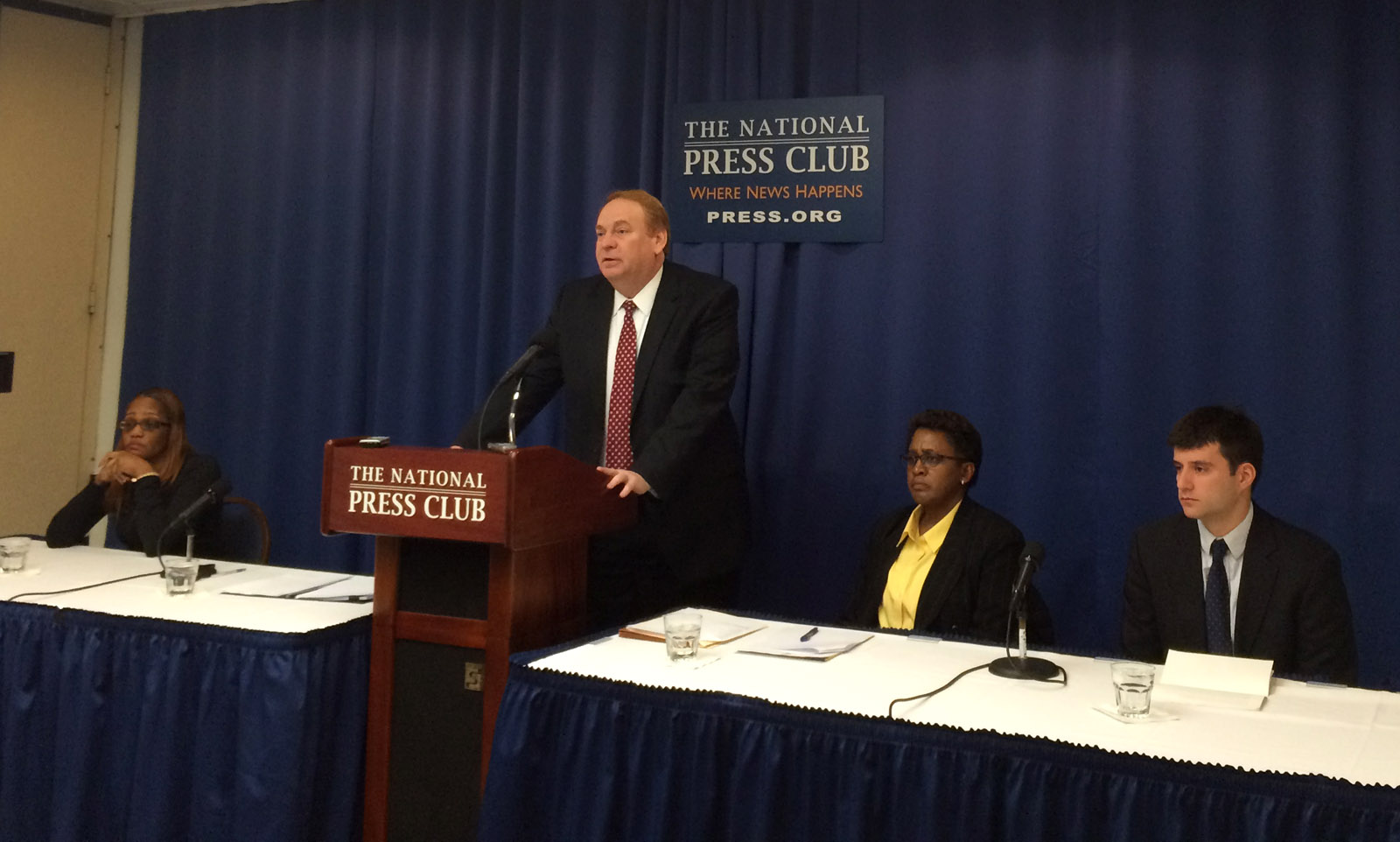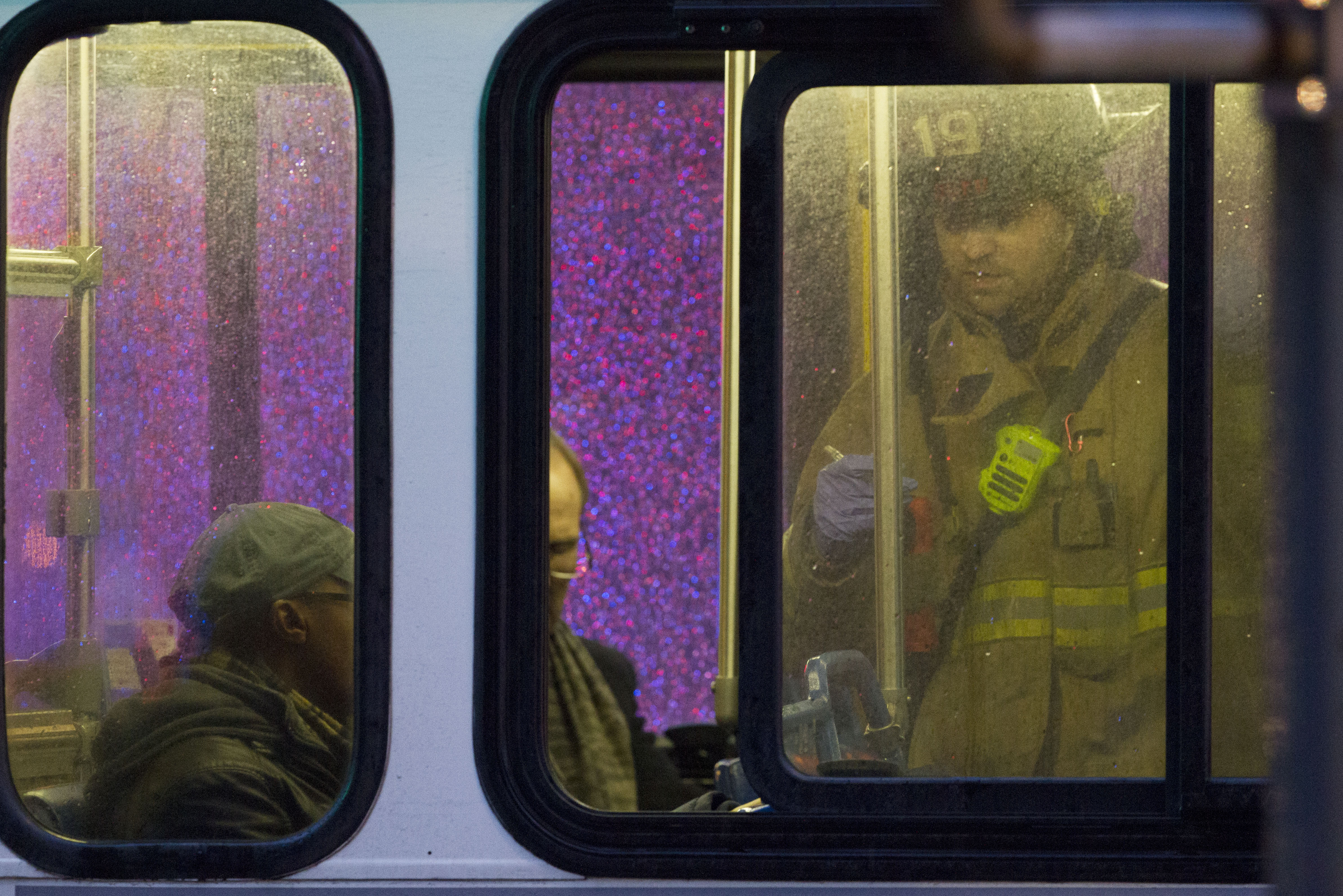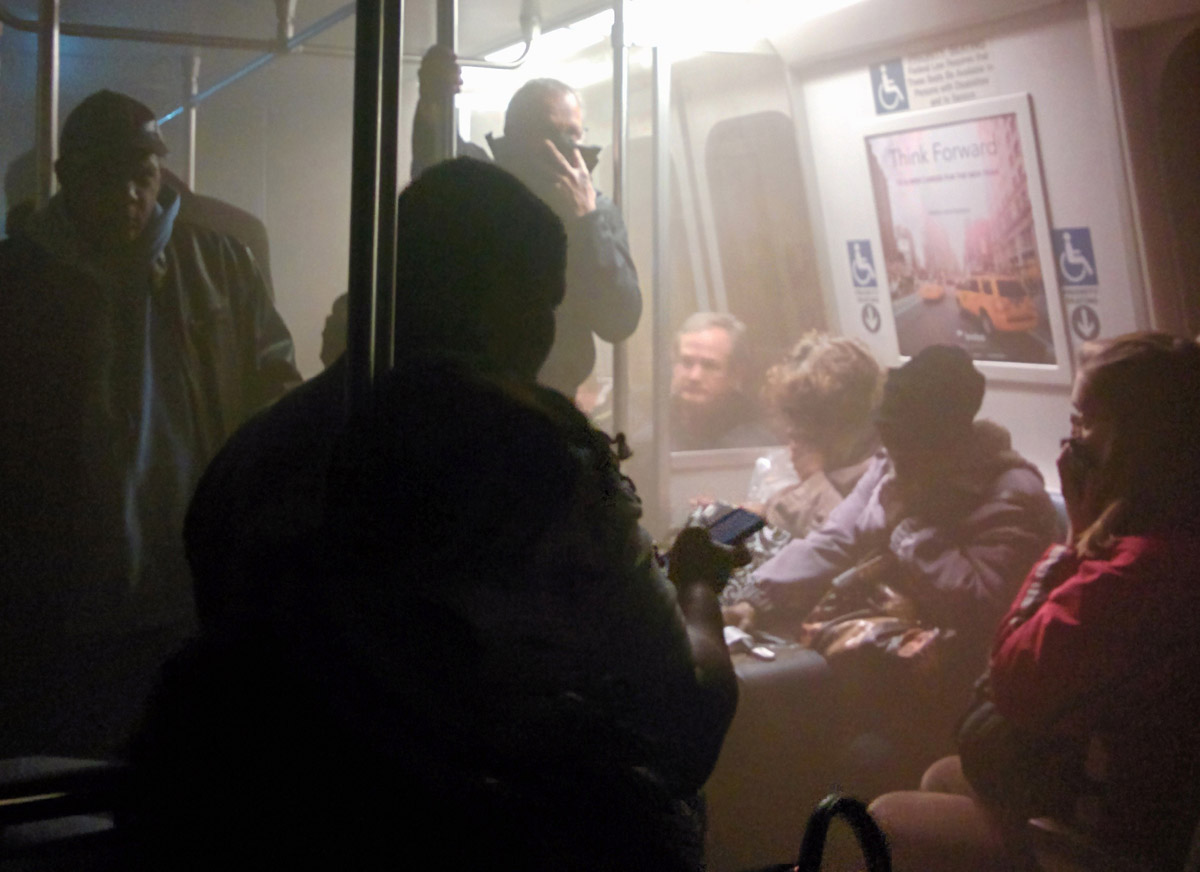
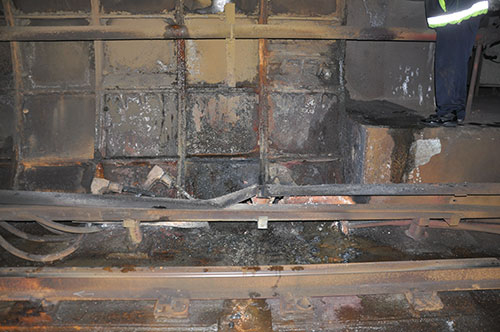
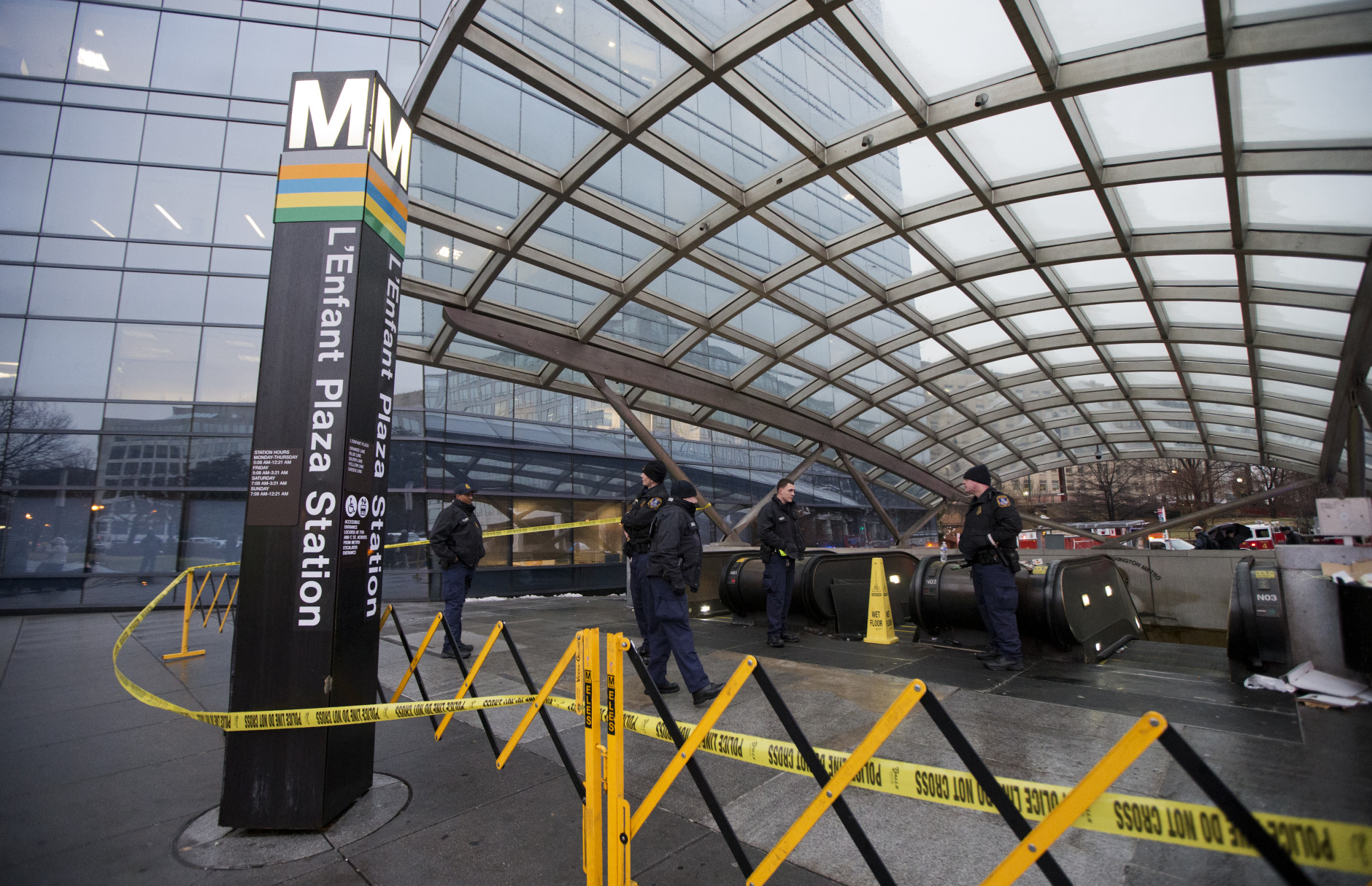
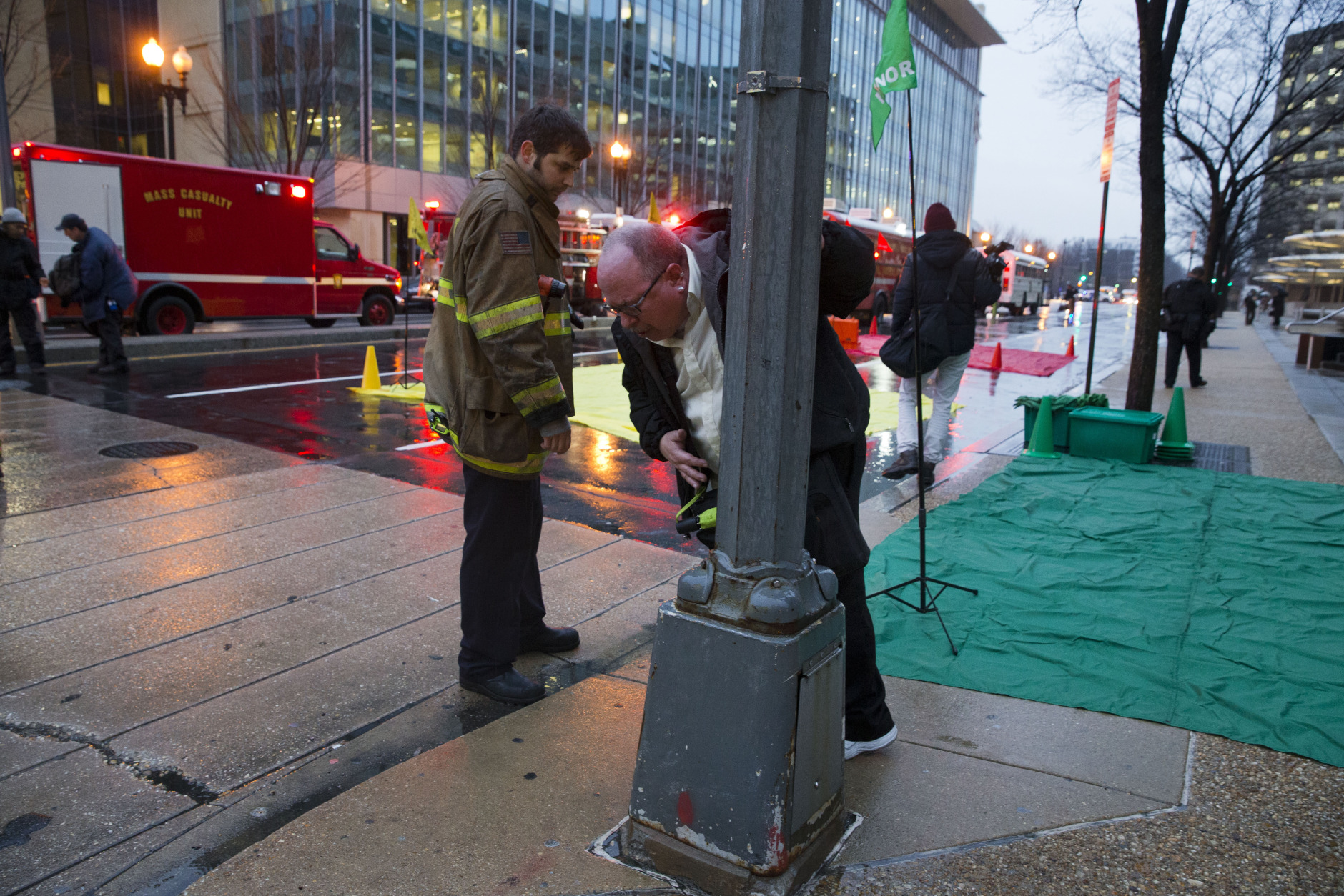
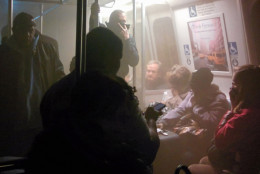
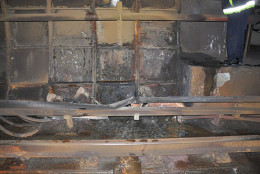
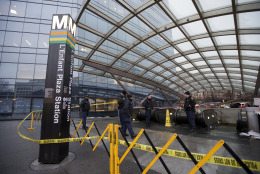
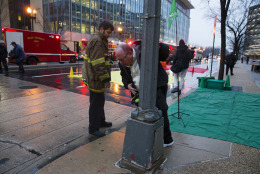
WASHINGTON — One year ago Tuesday, a Yellow Line train sat engulfed in smoke outside the L’Enfant Plaza station, and one passenger, Carol Glover, died. A year later, Metro has a long road ahead as it works to address dozens of safety changes ordered by federal regulators and to deal with a new round of lawsuits tied to the incident.
The Federal Transit Administration is now conducting daily and unannounced inspections of the Metro system in its temporary role as Metro’s direct safety oversight agency, and expects to add more safety orders to the list soon.
“FTA will soon close the first batch of accident investigation reports assumed from the TOC [Tri-State Oversight Committee] and expects to issue additional safety directives to WMATA during 2016 resulting in more corrective actions,” FTA Acting Administrator Therese McMillan said in a statement.
The FTA took over from the locally created TOC last October, after D.C., Maryland and Virginia leaders failed for years to implement a more powerful and independent Metro Safety Commission that would have more teeth to enforce penalties for safety violations. Local leaders have promised to finally get it done this year.
New Metro General Manager Paul Wiedefeld sees any enforcement as helpful to efforts to turn things around.
“Right now, the FTA is playing that role and, as you may or may not know, they’re here daily both inspecting on our tracks and in our facilities. And so, basically, that is the hammer and that’s the hammer that’s going to remain into the future,” he said in an interview with WTOP Monday.
“It’s not just, ‘OK, just say that you’re going to do it, but don’t worry about it, they never come back.’ Well now, guess what? They’re here,” he says.
Even before more safety directives from the FTA, Metro has more than 700 checklist items to address. from status reports and fan system upgrades to training and safety changes to ending red-signal running.
“The anniversary, as sad as it is, it’s an opportunity for me to reinforce throughout the entire agency how important the work is that we do here for the safety of our customers,” Wiedefeld says.
“My goal here is not to meet any standard of safety, but basically to really create the culture of safety. What that means is making sure that any employee, if they feel that something’s unsafe, they can say, ‘Wait a minute. I feel this is unsafe.’ There’s no retribution. There’s no fear of retribution. And that’s a culture shift here, so that’s what I’m trying to convey to all employees,” he says.
A group of more than 80 people who were affected by the smoke incident last year plan to file lawsuits Tuesday against Metro.
Glover’s family has already sued over her death.
The incident happened just as the previous permanent Metro general manager, Richard Sarles, was retiring. Sarles had come in after the 2009 Red Line crash promising reforms to the system.
After a tumultuous search, Wiedefeld was finally hired in November with a similar task.
“What I’m proud of is the line people. The more I meet them, there is a sense of pride in them. There is a sense that they want to do more. They are, I think, excited now — ‘OK, we’re turning a page here’,” Wiedefeld says.
“I’m working to get that buy-in and I think they understand that I’m serious that this is the way that we’re going to be.”
However, it could hit a roadblock in the spring and summer as Metro’s largest union negotiates a new contract.
Jan. 12, 2015: A timeline of events
The afternoon that smoke filled the Yellow Line train near L’Enfant Plaza, trains were running normally.
Although a full report on the investigation is not expected for a few more months, the National Transportation Safety Board said in June that the incident began with an electrical issue known as arcing, tied to third-rail power in the tunnel just before southbound Yellow Line trains go up and over the Potomac River toward Virginia. The arcing, about 2,000 feet south of the L’Enfant Plaza station, filled the tunnel with smoke, setting off a smoke alarm at 3:05 p.m. The train pulled into the tunnel a few minutes later, and passengers were stuck there for more than 30 minutes.
Read more of the minute-by-minute details from the day of the smoke incident.
A total of 380 people were taken off the train through the thick smoke in the tunnel after firefighters eventually arrived. Several others had decided to escape on their own earlier through an emergency exit.
By 4:27 p.m., everyone was off the train, including Carol Glover.
The 61-year-old grandmother was among the first people taken off the train. She was unconscious but alive when she was carried to the platform. By the time firefighters carried her outside, her pulse was gone. Only once she was at the surface without a pulse did rescuers call her an ambulance. They continued CPR and the ambulance left for the hospital at 4:28 p.m.
In all, 86 people were taken to the hospital. Nine others got medical attention outside the station. All but Glover survived.
What’s changed?
Other issues identified in a series of reports include the failure of D.C. Fire radios and the failure of first responders from different agencies to work together.
D.C. Fire and Metro have since worked to expand testing of radios throughout the system to ensure first responders can communicate in an emergency. Metro has also funded a firefighter position inside the troubled Rail Operations Control Center to increase coordination and communication.
While Metro Transit Police Chief Ron Pavlik said last month that there was no funding source identified to continue that program beyond spring, Wiedefeld says he is certain it will continue.
“That’s been a tremendous help, I think,” he says. “I’m not concerned about it; we’ll figure that out.”
Metro has hired, and is training, more staff for the Rail Operations Control Center.
“A bit of training has been done there, [and] it’s been very clear what they have to do,” Wiedefeld says.
He visited the center again Monday afternoon.
Several findings from various investigations included a lack of discipline, overworked controllers, and a lack of clear checklists and policies for the center, which functions like an air traffic control center for Metrorail.
Wiedefeld says he wants an “all hands on deck” approach from all employees when there are disruptions, such as unplanned single-tracking, that can throw a major wrench in a commute.
Metro has asked the FTA to approve a corrective action plan that would include the Rail Traffic Controllers under those questioned in accident investigations on the rails. The other FTA directive fix that has advanced to the review stage would include bus operations control center and street operations managers under a fatigue management program that is designed to reduce risks and mistakes.
Overall, Wiedefeld says, getting a new chief safety officer in place and expanding training exercises are keys to continued progress.
The previous chief safety officer resigned in September following a derailment outside the Smithsonian station that could have been avoided if warnings from track inspections were heeded.
“My focus is, going forward, we want to prevent anything from happening in the future, so that means we’ve got to make sure the equipment’s there, it’s maintained and all that, that the equipment is the latest and the greatest that we can possibly have out there, and that we constantly train, and it’s not only training our own people, but it’s training with outside people,” Wiedefeld says.
Getting that top-of-the-line equipment has been a problem, as the new 7000 Series railcars have been delayed by quality control and other issues.
“We don’t want to be redoing things that should have been done off the line, so that’s been the bit of the slowup on that,” Wiedefeld says. “I think in the very near future they will basically come off the line, ready to roll.”
The new cars are needed both to expand the fleet and to replace the 1000 Series cars that the NTSB said, following the 2009 Red Line crash, should be retired for safety reasons.
After the interview Monday, Wiedefeld went into the next room to address the importance of safety with 73 new employees.
Like Acting FTA Administrator Therese McMillan, Wiedefeld emphasized that an overhauled safety culture is one of his top goals.
“It’s getting the entire agency to behave that way, to work that way, to think that way, and you know that’s what I’m trying to do,” he says.
It’s something past Metro leaders have promised before.
“I don’t know what you have heard or haven’t heard, but there’s another thing that’s changed here a little bit is, as a nation, we realize that transit agencies across the nation haven’t had the same sort of standards that we’ve had at aviation, for instance.”
Wiedefeld is the former head of BWI-Marshall Airport. He believes the FTA oversight will force some things to happen now that have not happened before.
“I think that is a major change. So now when we’re talking about this and when I’m focusing on it, it has a different meaning, I think, than in the past it may have been: ‘Yeah, yeah we’ve heard this before, but there’s nothing at the other end,’ Well, now there is something at the other end,” he says.
Some of the things on Metro’s to-do list from the FTA that could take the longest to come up with actionable fixes for include ensuring that there is evidence that train operators are recertified every two years, and that employees get proper training to protect workers on the tracks.
Other direction from the FTA includes getting more time for track work, which could mean single-tracking for an entire week or more extensive shutdowns.
Metro has moved to fix the seals connected to parts of third-rail power cables to ensure water does not get inside. That can create electrical problems, especially since Metro deals with about 2 million gallons a day — 3 Olympic-sized swimming pools-worth — throughout the rail system.
The water has been a particular problem on the Red Line through the Bethesda area, where Metro at one point had warned it might need to shut down the entire stretch for weeks. Instead, Metro shut the stations for a number of weekends.
Metro has also been directed to come up with new plans to get rid of smoke in the system when it happens. One of the FTA directives includes an engineering assessment to find ways to improve the fan system and an order to document and schedule fan testing. All of the directives can be tracked on FTA’s online list. It tracks when Metro’s fixes are proposed and then approved. Actually following through on the plans is up to Metro.
“Although FTA is fulfilling a critical safety oversight function, responsibility for performing the actual work of making Metrorail safer for passengers and employees rests squarely on WMATA,” McMillan said in a statement.
Asked on Monday, Wiedefeld says he is willing to fire people if needed, although he has no plans to do so.
“If anyone doesn’t perform, yes, they will be let go; that’s not in debate. I haven’t seen that yet but, obviously, if I do see that then that’s how we would handle that,” Wiedefeld said.
Even amid concerns from some riders about crime and other issues, Wiedefeld says he believes Metro is safe.
“I ride it every day; my children, my wife ride it. It’s a very safe system. Believe me, it is a very safe system. Will there be occasional things? Yes. Look at any transit system in the country … these are big complex systems so things occasionally do happen, but that does not mean that we shouldn’t try to eliminate them all,” he says.
Wiedefeld says the investigation is still ongoing into what caused a Green Line train to separate into two parts last week. He says a smoke incident over the weekend caused the evacuation of riders from the Federal Center SW station was tied to a problem with a railcar, not an insulator.



